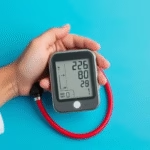In this article, we will be talking about **what is the normal blood pressure for a dog**. Just like humans, dogs also have normal blood pressure ranges that are considered healthy. Understanding these values can help pet owners monitor their dog’s health and identify potential issues early on. A dog’s blood pressure can be influenced by various factors, including age, size, breed, and overall health. Typically, a normal blood pressure range for dogs is between **110 and 160 mmHg** for systolic pressure, and **60 to 100 mmHg** for diastolic pressure. If you suspect that your dog’s blood pressure is outside of these ranges, it’s crucial to consult with a veterinarian. Early detection and intervention can make a significant difference in your dog’s health, potentially preventing severe health issues down the road.
Understanding Blood Pressure in Dogs
Blood pressure measures the force of blood against the vessel walls as the heart pumps blood throughout the body. It is a critical indicator of cardiovascular health in dogs. Reading blood pressure can be a good tool for diagnosing various conditions, including kidney disease, heart disease, and hormonal imbalances. Understanding how blood pressure is measured and what the readings mean is essential for the wellbeing of your furry friend. A veterinarian typically checks blood pressure using a Doppler ultrasound or an oscillometric method, which again varies depending on the dog’s size. Elevations or drops in blood pressure can indicate serious health issues, underlying diseases, or even pain, so regular monitoring is crucial for your dog’s health.
Factors Affecting Blood Pressure in Dogs
Several factors can influence the blood pressure of your dog. Size, age, breed, and general health condition play significant roles. Larger breeds generally tend to have higher blood pressures compared to smaller breeds. Similarly, older dogs often exhibit increased blood pressure levels due to age-related health problems such as reduced kidney function. Monitoring these factors and understanding their effects can be vital for maintaining your dog’s health. Regular check-ups with your veterinarian can help ensure that your pet is within the normal blood pressure range and detect any abnormalities early.
How to Measure Blood Pressure in Dogs
Measuring blood pressure in dogs can be done using different techniques and tools, usually available at veterinary clinics. The Doppler method is commonly used for its accuracy, especially in smaller dog breeds. This technique involves placing a probe on the dog’s leg to listen to blood flow through a vessel, providing a continuous reading of both systolic and diastolic pressures. The oscillometric method is another option, which uses a cuff placed around the leg to measure vibrations in the artery as the blood travels through it. Owners interested in monitoring their dog’s blood pressure at home should consult their veterinarian for guidance and proper equipment.
Symptoms of Abnormal Blood Pressure in Dogs
Recognizing the symptoms of abnormal blood pressure in dogs is crucial for timely intervention. Symptoms often differ based on whether the pressure is too high or too low. Signs of high blood pressure can include lethargy, nasal bleeding, and difficulty breathing. Conversely, low blood pressure may manifest as weakness, fainting, or cold extremities. If you observe any of these symptoms in your dog, seek veterinary advice immediately. Regular wellness exams can also help catch blood pressure irregularities before they escalate into more severe health issues.
High Blood Pressure in Dogs: Causes and Treatments
High blood pressure, or hypertension, can be caused by various factors, including obesity, kidney disease, hormonal disorders, and heart diseases. In many cases, it can be asymptomatic, appearing silent until severe symptoms arise. If a dog is diagnosed with high blood pressure, treatment usually focuses on the underlying cause. Diet, exercise, and medications such as ACE inhibitors, calcium channel blockers, or diuretics may be prescribed depending on the specific condition. Regular monitoring of blood pressure is also recommended for dogs with diagnosed hypertension to ensure that the treatments are effective.
Low Blood Pressure in Dogs: Causes and Treatments
Low blood pressure, or hypotension, can result from dehydration, shock, or less commonly from an underlying medical condition. Symptoms may include weakness, lethargy, and collapse. It’s vital to approach low blood pressure with urgency, as it could indicate severe health concerns. Treatment may involve fluid therapy, medications to stabilize blood pressure, and addressing any underlying issues. Keeping an eye on your dog’s habits and behavior can aid in the early detection of potential health problems.
Importance of Regular Check-ups and Monitoring
Routine veterinary check-ups are essential for maintaining your dog’s health, including monitoring blood pressure. Regular exams can help identify changes in blood pressure levels and the early onset of diseases. Veterinarians usually recommend that dogs over a certain age or with specific risk factors have their blood pressure checked regularly. Consistent monitoring can help catch potential issues before they become severe health problems. Encourage your veterinarian to incorporate blood pressure checks into routine wellness exams.
The Role of Diet and Exercise
The diet and exercise regimen of your dog plays a significant role in maintaining a healthy blood pressure level. A balanced diet that is low in sodium, rich in omega fatty acids, and appropriate for your dog’s life stage can contribute positively to cardiovascular health. Regular exercise is also vital as it can help reduce obesity and maintain muscle tone, ultimately benefiting your dog’s heart function. Always consult your veterinarian regarding nutritional needs and exercise plans tailored for your dog’s specific situation for better health outcomes.
When to Seek Veterinary Care
It is crucial to know when to seek veterinary care regarding your dog’s health, particularly concerning blood pressure issues. If your dog exhibits unusual behavior, such as sudden lethargy, weakness, or collapse, immediate veterinary care is essential. Regular check-ups also become imperative as your pet ages or if any significant health changes occur. Staying up-to-date with vaccinations, preventive care, and health assessments can play a crucial role in your dog’s overall wellbeing.
In summary, **understanding what is the normal blood pressure for a dog** is crucial for every responsible pet owner. Recognizing the normal ranges can help detect any abnormalities that may indicate serious health problems. Multiple factors, including age, size, and overall health, can influence these readings. Learning how to measure blood pressure and recognizing the symptoms of both high and low blood pressure can prompt timely veterinary intervention. Additionally, keeping an eye on your dog’s diet and regular exercise contributes further to maintaining healthy blood pressure levels. Routine vet visits and taking note of behavioral changes can make a significant difference in your dog’s health outcomes. Always consult with your veterinarian for tailored advice, as they can provide guidance based on your dog’s specific needs and health status.
Frequently Asked Questions
What is considered normal blood pressure for dogs?
The normal blood pressure range for dogs is typically between **110 to 160 mmHg** for systolic pressure, and **60 to 100 mmHg** for diastolic pressure.
How can I tell if my dog has high or low blood pressure?
Symptoms of high blood pressure in dogs may include lethargy, nasal bleeding, and difficulty breathing. For low blood pressure, symptoms may include weakness, fainting, or cold extremities.
How is blood pressure measured in dogs?
Blood pressure in dogs can be measured using a Doppler ultrasound or an oscillometric method, both of which require specialized equipment typically available at veterinary clinics.
What can I do to help maintain my dog’s blood pressure?
Maintaining a healthy diet low in sodium, ensuring proper exercise, and scheduling regular veterinary check-ups are essential steps toward managing your dog’s blood pressure.
When should I take my dog to the vet for blood pressure issues?
If you notice any symptoms such as lethargy or sudden changes in behavior, or if your dog is a senior or has pre-existing conditions, it is important to consult with your veterinarian for blood pressure checks.
Further Reading
What Type of Psychotherapy Is Best for Anxiety?







